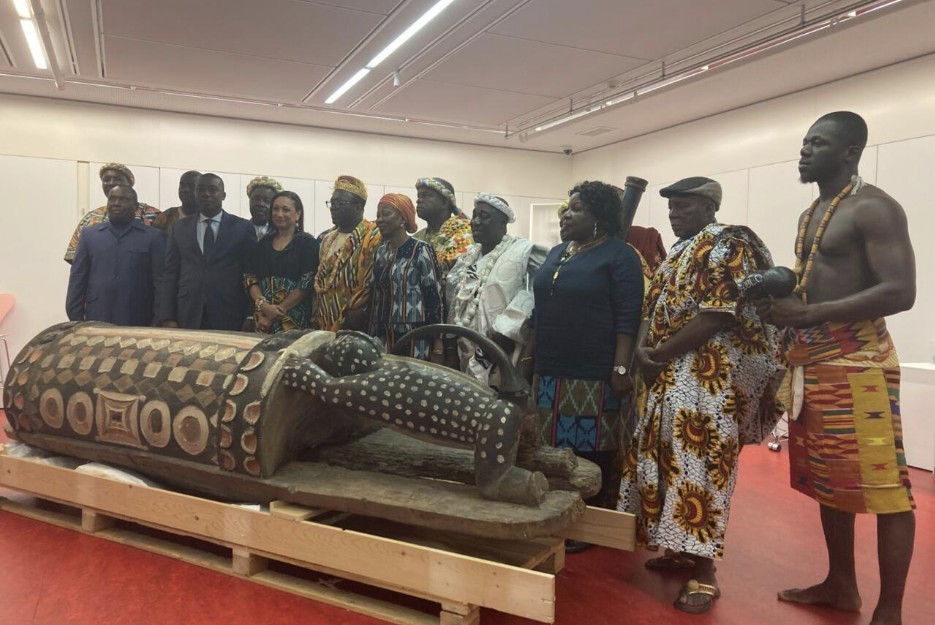"Selective Outrage”: How Western Media Bias Frames Global Suffering
- Yunya Wang
- Apr 23
- 4 min read

“There are no politics without audiences, and no audiences without emotion.”
– Marwan Bishara, Palestinian Arab journalist for Al Jazeera
In 2022, global headlines were dominated by images of Ukrainian families huddling in front of train stations, children in blue and yellow face paint waving goodbye to soldiers, their heart-wrenching pleas for international support heard from miles away. Barely a year later, thousands of Palestinians were displaced, harmed, or killed in Gaza — yet media coverage was fragmented, vague, and often obscured by terms like “clashes” or “retaliatory strikes.”
This is not an accidental disparity. It’s an expression of selective outrage: the tendency of Western media to amplify certain humanitarian crises while muting or distorting others. By selectively deciding who gets airtime, sympathy, and headlines, global media doesn’t just inform public consciousness — it actively shapes it. And that framing has tangible consequences for who receives aid, who gets sanctioned, and whose suffering is seen as newsworthy.
But what does this mean for society? And what are the consequences of such distorted storytelling?
Selective outrage reflects how different media prioritises certain global events over others, often along political and racial lines. The idea has been explored thoroughly by academics, Noam Chomsky and Edward S. Herman in Manufacturing Consent (1988), which argues that mass media serves elite interests by filtering only certain news through corporate and ideological lenses.
If we rewind this back a few years to Yemen and Sudan’s forgotten crises, we can see how prominent this issue really is. Yemen’s war has killed more than 377,000 people since 2015, with 60% attributed to indirect causes like famine. Despite these shocking numbers, it remains one of the world’s most underreported humanitarian crises. Western support for Saudi-led airstrikes has often been overlooked or soft-pedaled in coverage.
As for Sudan’s civil war which reignited again in 2023, over 8.5 million people have been displaced— including ethnic cleansing in Darfur. So how come the story rarely dominates headlines outside African media? How come when it does, coverage is usually brief and lacking depth?
The Ukraine war gives us the other side of the media bias, especially when compared with the equally destructive Israel-Gaza war. The Ukraine war received over 5,000 articles in Western media in its first month alone — more than the Yemen conflict had across seven years. CBS News correspondent Charlie D’Agata commented, “This isn't a place...like Iraq or Afghanistan...This is a relatively civilized, relatively European city”. This statement was widely criticised, but gave us a transparent understanding of the kind of sentiment Western coverage values — that some lives appear more relatable, more tragic, more human, and thus, should be reported on more.
By contrast, Western coverage of the Israel-Gaza war used strikingly passive headlines such as “Israel strikes Gaza after Hamas attack” (Reuters), or “Clashes erupt in Jerusalem” (CNN), failing to mention, let alone contextualise, decades of occupation, military blockade, or civilian deaths. A Guardian study found that Gazan deaths were 4 times less likely to be reported in headlines than Israeli deaths during the same period.
You may be wondering how this distressing phenomenon happens. First, we have geopolitical bias that explains how media coverage most often aligned with political interests - each nation to their own. Countries like Israel have long been friendly Western allies, while Russia and China are preached as global antagonists. This framing creates what is seen as “us vs. them” or “good vs. evil”. Priorities then become skewed as global empathy and support usually goes towards dominating headlines. Ukraine received $77 billion in U.S. aid within a year (CSIS, 2023), while UN appeals for Yemen and Sudan remain underfunded by 50% or more. Similarly, the EU welcomed over 4 million Ukrainian refugees with open arms, the complete opposite of what was offered for Syrian, Afghan, and African refugees seeking the same protection.
Politics is very rarely not influenced by one’s own racial understanding and cultural relatability. Non-European suffering is frequently seen as ‘normal’ or ‘not surprising’, this being a direct link to Western media’s selectiveness. The blatant racism is self-explanatory here and, as noted in an open letter by the Arab and Middle Eastern Journalists Association (2022), such a mindset “dehumanises and renders irrelevant the pain of people of color.”
The media itself plays a big part in driving selective bias. News organisations rely on audience engagement. Conflicts in culturally distant regions of the world often generate fewer views, and fewer clicks, which leads to editorial deprioritisation (put simply — editors disregarding a particular news story for more pressing, entertaining news). When the media fails to condemn humanitarian disasters equally, their legitimacy is undermined and there is a loss of trust from those who are aware. The UN, for instance, has faced criticism for its delayed or nonexistent responses to Gaza and Sudan, compared to its swift swoop-in for Ukraine.
Selective outrage isn’t just bias — it is a catalyst for unequal coverage and unbalanced empathy in the face of justice, and with injustice being daily realities for millions, the media must stop determining whose pain is recognised and whose is ignored. In this digital age, it becomes more important than ever to support independent, diverse and decolonial media that challenges mainstream narratives by offering on-the-ground reportings from local journalists. Some include Al Jazeera, Middle East Eye, The New Humanitarian, and African Arguments.
As readers, we must constantly be reflecting: Who is telling this story? What do they want us to believe? Who benefits from this framing? What is missing?
Start asking the harder questions.





Comments